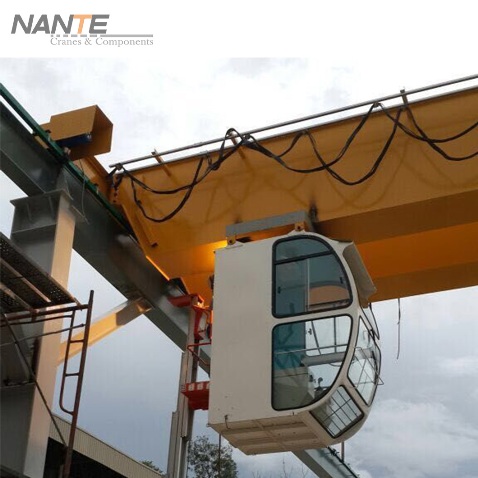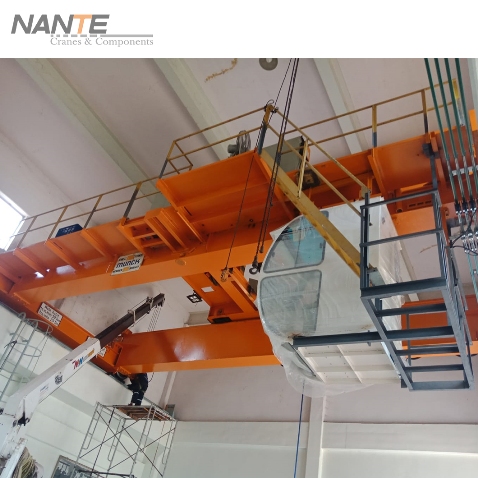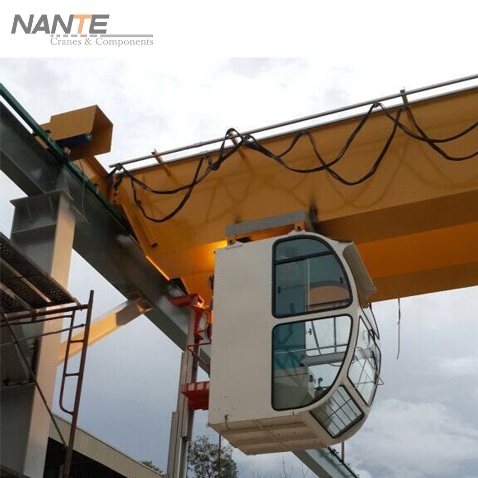An Important Crane Component for Crane Operators – Crane Operator Cabin
Date: 2024-03-01 Share:
A crane operator cabin is a workshop where the operator controls the crane. The operator cabin is typically equipped with a variety of control and monitoring equipment, such as controllers, control screens, switchboards, alarms, and crane operator’s seats. These types of equipment enable the operators to safely and accurately operate the crane for a variety of lifting and transport tasks.


Crane operator cabins for overhead cranes and gantry cranes
Crane operator cabins for overhead cranes and gantry cranes differ slightly in design and application, but they share common features such as providing a safe and comfortable working space for the operator. Below is a brief overview of crane operator cabins for both types of cranes:
Crane operator cabins for overhead cranes:
Overhead cranes, also known as bridge cranes, are typically used in indoor environments such as factories, warehouses and workshops. The crane operator cabin of a bridge crane is usually located on the bridge of the crane, providing the operator with a clear view of the workspace below.
Features of overhead crane operator cabins:
Firstly, the overhead crane operator’s cab has a compact design to fit into the limited space along the bridge. It is structurally enclosed to protect the operator from dust, debris and other contaminants. Secondly, the operator cabin is equipped with comfortable seats and ergonomic controls that reduce operator fatigue. In addition, the crane operator cabin has safety features such as emergency stop buttons and safety rails. Finally, its good ventilation and lighting can ensure a comfortable working environment.
Crane operator cabins for gantry cranes:
Gantry cranes are usually used in outdoor environments such as harbors, docks and large construction sites. The crane operator cabin of a gantry crane is usually located in the gantry structure itself, providing the operator with a wide view of the workspace.
Features of gantry crane operator cabins:
Firstly, a gantry crane operator cabin has a sturdy structure that can withstand the outdoor elements and potential weather exposure. And it has weatherproof materials and coatings on the outside to prevent corrosion and rust. Secondly, the body of the gantry crane operator cabin has large windows or glass panels that provide excellent visibility and views. Adjustable seats and controls allow it to adapt to different operator preferences and working conditions. In addition, the operator cabin has safety features such as fall protection systems and emergency exit options. It may also have amenities such as heating and cooling systems, soundproofing and communication equipment.
Both crane operator cabs are designed to ensure the safety and comfort of the operators while providing them with the necessary tools and controls to perform their jobs effectively. The specific design and features of the cab may vary depending on the manufacturer, model and application requirements.

Expectations of the crane operator for the cabin
For crane operators, their expectations of the crane operator cabin may include several aspects:
The first point is comfort. The crane operator’s cab should provide enough space for the crane operator to move and operate the controls comfortably. And the seat should be comfortable to minimize fatigue during prolonged operation.
The second point is a good view. The crane operator’s room should have a clear view so that the crane operator can see the operating area and the surrounding environment. Its windows should be clear and free from any obstacles that block the view.
The third point is safety. The crane operator’s room should be safe and should have adequate protection measures, such as emergency stop buttons, guards and fire extinguishers. In addition, the structure of the operator’s room should be strong enough to withstand possible shocks and vibrations.
The fourth point is easy to operate. The controls in the crane operation room should be well laid out and easy to understand and operate. All instruments and indicators in the operation room should be clearly visible so that the crane operator can quickly understand the status of the crane.
The fifth point is temperature control. The crane operator’s room should preferably be equipped with an air conditioning system capable of providing cooling in hot weather and heating in cold weather to maintain a comfortable temperature inside the operator’s room.
The sixth point is sound insulation. The crane operator’s room should have good sound insulation to reduce the interference of external noise so that the crane operator can concentrate more on the operation.
The seventh point is modern technology. Modern crane operator cabins may be equipped with a touch screen, GPS navigation, automation control system and other advanced technology to improve the accuracy and efficiency of the operation.
To sum up, an operator room that meets the crane operator’s expectations should be comfortable, safe, easy to operate, technologically advanced, and provide a good view and working environment.
Nante’s crane operator cabins
NANTE can provide 5 steps-less control joystick console for overhead crane, gantry crane with one hoist or dual hoist. NANTE also can customize the crane operator cabin with different dimensional and functions, like monitoring screen, air conditioner, and walkway platform for the cabins, to provide good vision and, a comfortable environment for operators, and also provide features of sturdy, beautiful, safe, heat-insulating, fire-proof, dust-proof, and fully enclosed. Welcome to learn about our crane operator cabins.
 English
English






